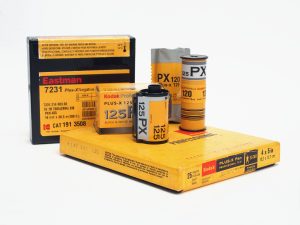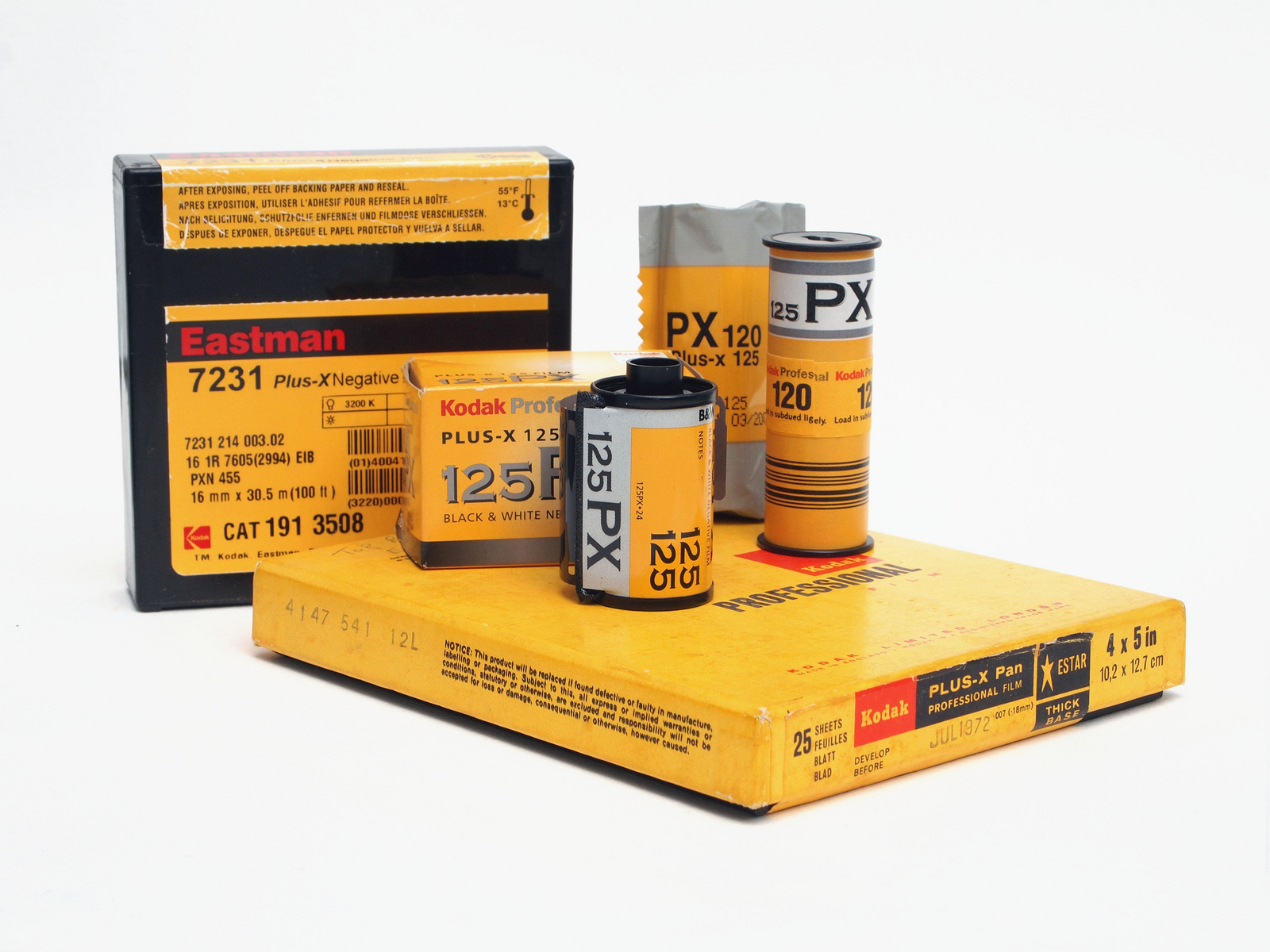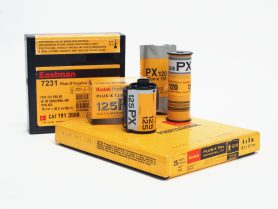
Kodak’s Plus-X was a type of fine-grained, medium speed panchromatic black and white film originally released in 1938 as Eastman Plus-X, a motion picture stock rated at ASA 50. In the 1940s, it quickly became popular with still photographers as an alternative to slower orthochromatic films of the day. The film was available in a variety of formats, from 16mm to large format sheet film in negative and reversal formats. The formula and ASA speed rating of the film would change over the years, but generally remained true to it’s fine grained medium speed roots. Sadly, the film was discontinued in late 2011, much to the dismay of photographers around the world.
Over the course of it’s 73 year lifespan however, the film was one of the most popular black and white emulsions ever made, and was widely used by professional and amateur photographers alike. In the middle of the 20th century, it was rated between ASA 125 and 160 and allowed for 2-3 stops of speed over Kodak Panatomic-X, without introducing much grain.

In recent years, the film remains popular as a variety of internet bloggers have written about their experiences with the film as it is known to survive quite well, many decades after it’s expiration date. Petapixel quite possibly has the record for a recently shot roll of Plus-X expired in December 1945 in this review.
Here are a couple of other blog posts from people shooting Plus-X within the last several years, along with some sample images they got.
http://www.alexluyckx.com/blog/index.php/2018/09/10/classic-film-review-kodak-plus-x/
https://www.jamescockroft.com/20171013/photography/kodak-plus-x-125/
https://petapixel.com/2017/05/26/shooting-35-year-old-roll-kodak-film/

While it is fun to look at contemporary examples of the film, this is a Keppler’s Vault post, and this week we look back to the October 1958 issue of Modern Photography with an article about the “new” Kodak Plus-X. Although the article doesn’t state what’s new about the film, it’s reference to it being an ASA 160 speed film suggests that a speed increase from the earlier ASA 80 stock was the biggest change. Finding the exact dates of these changes is difficult, but according to this article from August 1956 says it was ASA 80 in daylight and 64 in tungsten light, so the change from ASA 80 to 160 had to have occurred between 1956 and 58.
The article champions the film as a “do everything” film that can be shot in almost every lighting condition, while still maintaining a sharp and fine grained look that professional photographers were after.
Perhaps the most interesting (and relevant today) part of the article are the development tables for the film using a variety of developers and how you can push the film to faster speeds, even as high as ASA 1000! This kind of information is really valuable today as there are fewer and fewer people doing this sort of thing and having a reference like this from the days in which the film was new, can be very useful for people wanting to experiment today.
As always, check out the gallery below and be sure to click on the link of each image in the gallery to view the full size version of each page for easier reading.
All scans used with permission by Marc Bergman, 2019.









I very seldom used Plus X, in the day.
Tri X (ei 400-1600) was sooo good!
Panatomic X for the occasional fine grain application
I have two 100′ rolls of Tri-X currently and have shot it with great success. I just prefer very fine grain films and find that while the grain isn’t big on Tri-X, I just don’t prefer it as much.
Kurt: That was also my pair. Tri-X at ISO 1200 processed in Acufine, and Pan-X at ISO 40 processed in diluted Microdol. Plus-X fell between the alternative need for speed or the requirement of small grain.
Thank you for including my photo in your post! The image is a rather important one to me as a Canadian and a Military Historian! The National War Memorial is one that I always make a point to visit and reflect at whenever I’m in Ottawa, Ontario.
Glad you’re happy with it’s inclusion. I loved your review of it and when I saw the sample photos, I knew I had to reach out!
As far as I remember until the release of Plus-X the only 35mm B&W generally available in the US was Panatomic X (introduced in 1933). Most early users of 35mm cameras (and 828) shot color. The speed of B&W films varied depending on the developer used. Again relying on memory, I used D-76 to process Plus-X and rated it 80 ASA
My very best prints, and my very best large prints were from Panatomic-X, but it was inconveniently slow and only for special purposes.
For reportage, when I needed the fastest possible shutter speed and the smallest possible aperture, I used Tri-X, like everybody else.
But Plus-X was my favorite and my go-to film for high quality outdoor photography. It had by far the nicest combination of fine grain, beautiful tonality and ease of use.
When it was discontinued I bought 4 bricks of it (only 4 because that was all I could afford at the time) and froze them. I’ve used it very sparingly since and still have one frozen brick left.
I mostly replaced Plus-X with FP-4, which is fine, but I think not quite as nice. And Acros is gone now too.
Anyway, thanks for the fine article.
I tend to prefer Pan-X a little more than Plus-X, but thats only because I love very slow film. Plus, over the decades, Ive found that Pan-X ages even better than Plus-X does. But the additional speed of Plus-X makes for a much more flexible film. They were both great emulsions and it’s a shame they’re no longer being made.